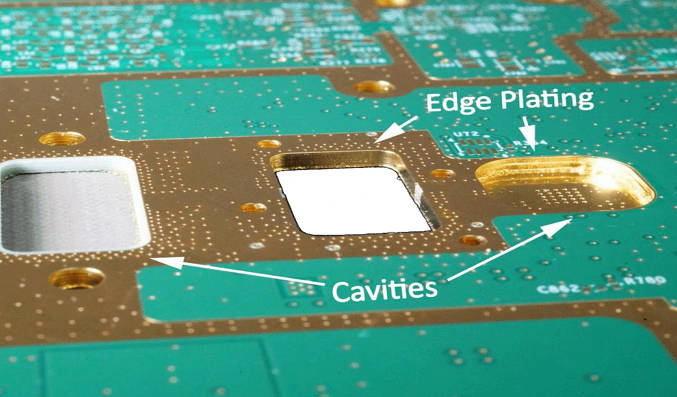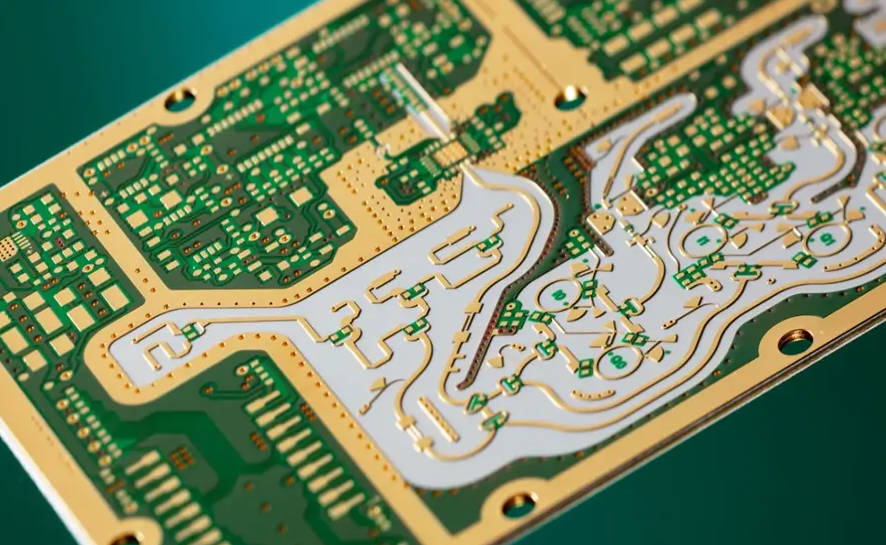1. Introduction: Why HiPot Testing Matters for PCB Manufacturers
In the intricate world of PCB manufacturing, ensuring the reliability and safety of electronic components is paramount. Among the array of quality control measures, High Potential (HiPot) testing, also known as dielectric withstand voltage (DWV) testing, stands out as a critical step. It’s a non-destructive test designed to verify the electrical insulation integrity of a printed circuit board. For any China PCB manufacturer aiming for global market leadership, or indeed any Printed circuit board manufacturer worldwide, HiPot testing is indispensable. It safeguards against potential electrical failures, which can lead to product malfunction, safety hazards, costly recalls, and significant reputational damage. By rigorously testing the insulation strength, HiPot testing ensures that your PCBs can safely withstand expected operating voltages, providing peace of mind for both manufacturers and end-users.

2. Understanding HiPot Testing: The Fundamentals
At its core, HiPot testing involves applying a high voltage, significantly greater than the normal operating voltage, between two points that are intended to be electrically isolated. The purpose is to determine if the insulation material or the air gaps between these points can withstand the applied voltage without breaking down or exhibiting excessive leakage current.
Basic Principle
The test works by applying a high AC or DC voltage across the insulation barrier. If the insulation is sound, only a very small leakage current will flow. However, if there’s a defect—such as a tiny crack, a void, contamination, or insufficient spacing—the insulation will fail, resulting in an abrupt increase in leakage current, or even a breakdown (arc/spark).
Key Parameters
To effectively perform a HiPot test, several key parameters must be precisely defined:
- Test Voltage: This is arguably the most critical parameter. It’s typically derived from the PCB’s maximum working voltage, often with a safety margin (e.g., 2 times the operating voltage plus 1000V, or as per specific industry standards like IEC 60950). The selection of the test voltage must be carefully considered to ensure it’s high enough to reveal potential defects without damaging healthy insulation.
- Test Duration: The length of time the high voltage is applied. While some standards specify very short durations (e.g., 1-2 seconds), others might require longer periods (e.g., 60 seconds) to detect subtle, time-dependent insulation weaknesses.
- Leakage Current Limit: This is the maximum permissible current that can flow during the test without triggering a “fail” condition. A very low leakage current indicates robust insulation. This limit is set to differentiate between acceptable, minor leakage and a dangerous insulation breakdown.
3. Types of HiPot Tests for PCBs
While often referred to generically, HiPot testing encompasses a few distinct types, each targeting specific insulation characteristics:
- Dielectric Withstand Voltage (DWV) Test: This is the most common form of HiPot testing. It directly checks if the insulation can withstand a specified high voltage for a set period without dielectric breakdown or excessive leakage current. It’s a pass/fail test designed to detect catastrophic insulation failures.
- Insulation Resistance (IR) Test: Often performed in conjunction with or prior to a DWV test, the IR test measures the actual resistance of the insulating material in megaohms or gigaohms. While HiPot checks for breakdown, IR measures the quality of the insulation. A low insulation resistance can indicate moisture ingress, contamination, or degraded material, even if it doesn’t immediately lead to a breakdown under HiPot.
- Arc Detection/Flashover Testing: More sophisticated HiPot testers can detect momentary arcing or flashover events. These intermittent discharges indicate weaknesses in the insulation path that might not result in a continuous high leakage current but still pose a safety risk. Detecting these brief events provides a more thorough assessment of insulation integrity.
4. Where and When is HiPot Testing Performed in PCB Manufacturing?
HiPot testing is integrated into the PCB manufacturing process at various stages to maximize defect detection and ensure quality at each step.
During Fabrication (Bare Board Testing)
For a Printed circuit board manufacturer, HiPot testing on bare boards is crucial. At this stage, the test verifies:
- Inter-layer Insulation: Ensures no unintended shorts or conductive paths between different layers of the PCB.
- Trace-to-Trace Isolation: Confirms proper insulation between adjacent traces.
- Via Insulation: Checks the integrity of insulation around plated through-holes.
This testing is typically performed after the etching process and often before the final surface finish. Catching defects at the bare board stage is far more cost-effective than after components are assembled.
After Assembly (PCBA Testing)
Post-assembly HiPot testing, a vital part of PCB Assembly quality control, is critical. Here, the focus shifts to verifying:
- Component-to-Trace Isolation: Ensures that components are properly mounted and do not create unintended shorts to adjacent traces or planes.
- Component-to-Chassis Isolation: Particularly important for power supplies or high-voltage circuits, ensuring proper isolation from the product’s enclosure.
- Solder Joint Integrity: Detects potential solder bridges or excessive solder that could reduce isolation distances.
- Contamination: Identifies issues like flux residue or other debris that can compromise insulation over time.
Integrating HiPot testing at both the bare board and PCBA stages offers comprehensive coverage, significantly reducing the likelihood of field failures.
Test Stage Comparison
| Feature | Bare Board HiPot Testing | PCBA HiPot Testing |
| Purpose | Verify insulation integrity of the PCB substrate itself | Verify insulation integrity of assembled board & components |
| Defects Caught | Material flaws, etching errors, layer shorts | Solder bridges, component placement issues, contamination |
| Cost of Failure | Low (scrap bare board) | High (rework, scrap assembled board, potential field failure) |
| Complexity | Generally simpler fixtures | More complex fixtures, potential component damage if mishandled |
5. Setting Up and Performing a HiPot Test on PCBs
Effective HiPot testing requires meticulous setup and adherence to strict safety protocols.
Test Points
Selecting the correct test points is fundamental. For a PCB, this often involves applying high voltage between:
- Power and Ground Planes: A common and crucial test.
- Isolated Circuits: Between circuits designed to be entirely separate for safety or functional reasons.
- High Voltage vs. Low Voltage Sections: Ensuring adequate isolation where voltage levels differ significantly.
Safety Considerations
Given the high voltages involved, safety is paramount. Strict adherence to safety guidelines is non-negotiable to protect operators and prevent damage to equipment.
- Proper Grounding: All test equipment and the DUT (Device Under Test) fixture must be correctly grounded.
- Safety Interlocks: Test enclosures should have interlocks that immediately cut power if opened during a test.
- Protective Enclosures: HiPot testing should occur within a shielded enclosure to prevent accidental contact with high voltage.
- Operator Training: All personnel involved must be thoroughly trained on HiPot testing procedures, safety protocols, and emergency response.
- Warning Signs: Clear signage indicating high voltage presence.
- Residual Voltage Discharge: Ensuring that any stored charge is safely discharged after the test.
Test Equipment
- HiPot Testers: Available in AC (Alternating Current) and DC (Direct Current) versions.
- AC HiPot Testers: Often used for general insulation breakdown tests, simulating AC line conditions. They can also detect partial discharges.
- DC HiPot Testers: More effective for detecting subtle insulation weaknesses over time and are less prone to issues caused by capacitive current in highly capacitive circuits.
- Test Fixtures and Probes: Custom fixtures are often designed to safely and repeatedly connect to the designated test points on the PCB. These fixtures must be robust, properly insulated, and designed to prevent arc-over.
Test Procedure Steps (Simplified)
- Connect DUT: Securely place the PCB in the test fixture.
- Select Parameters: Program the HiPot tester with the correct test voltage, current limit, and duration.
- Initiate Test: Activate the test. The tester will apply the high voltage.
- Monitor Results: The tester continuously monitors leakage current.
- Pass/Fail Determination:
- Pass: If the leakage current remains below the set limit for the entire duration, and no breakdown occurs.
- Fail: If the leakage current exceeds the limit, or a breakdown is detected.
- Discharge: Safely discharge any residual voltage from the PCB after the test.
6. Common Failure Modes Detected by HiPot Testing
HiPot testing excels at uncovering a range of insulation-related defects that might otherwise go undetected until a product fails in the field.
- Short Circuits: Most commonly due to unintended metallic connections like solder bridges, misplaced conductive debris, or etching defects.
- Poor Insulation/Dielectric Breakdown: Caused by intrinsic material defects (e.g., voids in the laminate, delamination), degraded insulation from heat or moisture, or overall insufficient dielectric strength for the application.
- Inadequate Creepage and Clearance Distances: Design flaws where the physical distances over (creepage) and through (clearance) the insulation are too small for the applied voltage, leading to arcing or breakdown.
- Damaged Traces or Pads: Physical damage to conductive paths that compromises the surrounding insulation.
- Contamination: Residues from the manufacturing process (e.g., flux, cleaning agents), dust, or fingerprints that create conductive paths over the insulation surface.
7. Benefits of Integrating HiPot Testing into PCB Manufacturing
For a pcb supplier or a China PCB manufacturer, implementing robust HiPot testing offers multifaceted benefits:
- Enhanced Product Safety: This is the primary benefit, as it directly prevents electrical shock hazards, fire risks, and other safety incidents associated with electrical insulation failure. Compliance with international safety standards (e.g., UL, CE, IEC) is often mandatory and reliant on effective HiPot testing.
- Improved Product Reliability and Longevity: By identifying and eliminating insulation weaknesses early, HiPot testing drastically reduces the likelihood of premature product failures in the field, leading to more robust and long-lasting electronic devices.
- Compliance with Industry Standards: Many industries, especially those dealing with high-voltage electronics, medical devices, and consumer goods, have specific safety and performance standards that necessitate HiPot testing. Adhering to these standards is crucial for market access and legal compliance.
- Reduced Warranty Claims and Rework Costs: Catching insulation defects during manufacturing means fewer products failing in the hands of customers, leading to significantly lower warranty claims, reduced repair or replacement costs, and improved customer satisfaction.
- Brand Reputation Protection: Consistently delivering safe and reliable products through rigorous testing builds trust and enhances the manufacturer’s brand image. Conversely, product failures due to electrical issues can severely damage a brand’s reputation.
8. Best Practices and Considerations for PCB Manufacturers
To maximize the effectiveness of HiPot testing, manufacturers should adhere to several best practices:
- Accurate Test Voltage Selection: Collaborate closely with product design engineers to define the appropriate test voltage based on the product’s operating voltage, surge requirements, and relevant safety standards. Over-testing can damage good boards, while under-testing can miss critical defects.
- Robust Fixture Design: Invest in high-quality, durable, and safely designed test fixtures. A poorly designed fixture can introduce false failures, compromise safety, or damage the PCB.
- Regular Equipment Calibration: HiPot testers, like all precision instruments, require regular calibration to ensure accurate voltage output and current measurement. This maintains the integrity of your testing process.
- Comprehensive Data Logging and Analysis: Record all test results (pass/fail, leakage current values, test voltage, duration). This data is invaluable for process monitoring, identifying trends, and continuous improvement initiatives within your PCB manufacturing line.
- Efficient Troubleshooting: Develop clear procedures for troubleshooting HiPot failures. This involves systematic inspection, root cause analysis, and corrective actions to prevent recurrence.
- Integration with Automation: For high-volume production, integrating HiPot testing into automated test systems can improve throughput, reduce human error, and enhance consistency.
9. Conclusion: HiPot Testing as a Cornerstone of Quality in PCB Manufacturing
HiPot testing is far more than just another quality check; it’s a fundamental pillar of safety and reliability in PCB manufacturing. For any Printed circuit board manufacturer, from a burgeoning China PCB manufacturer like Mars-PCB to established global players, understanding and effectively implementing HiPot testing is crucial. It’s an investment that pays dividends in reduced failures, enhanced safety, regulatory compliance, and ultimately, a stronger market position. By diligently applying HiPot testing, manufacturers ensure that every PCB leaving their facility is not only functional but also safe, reliable, and built to last, safeguarding both their products and their reputation.



